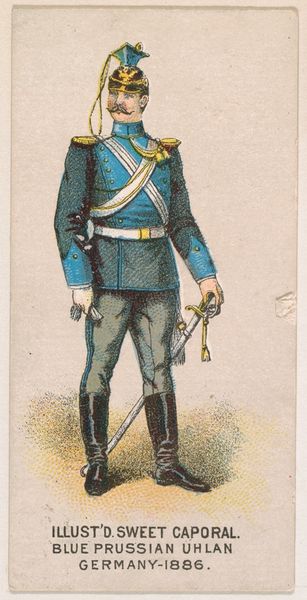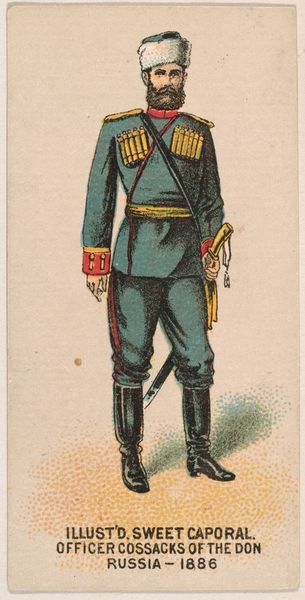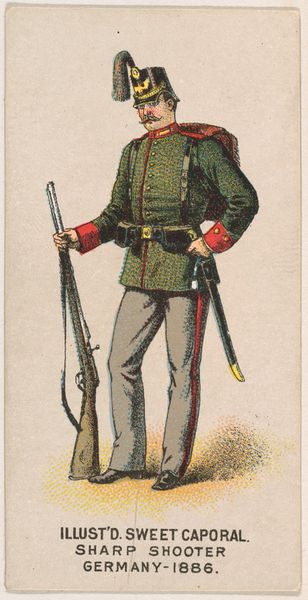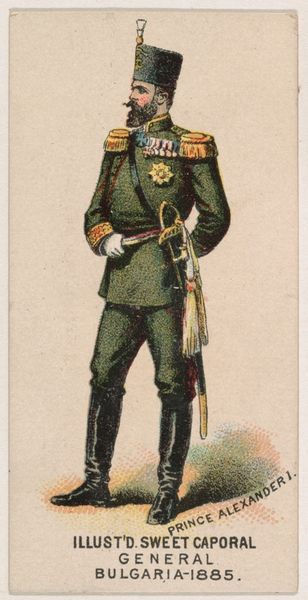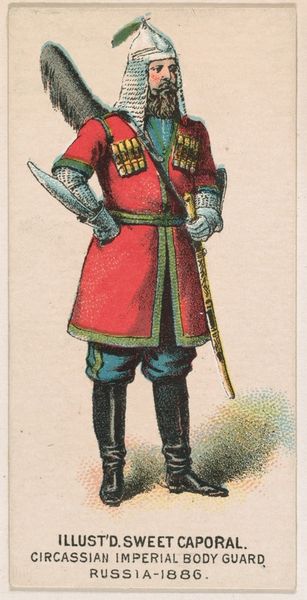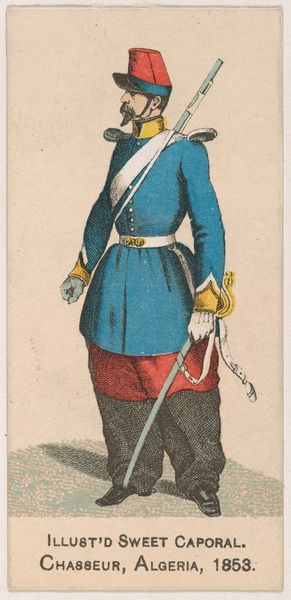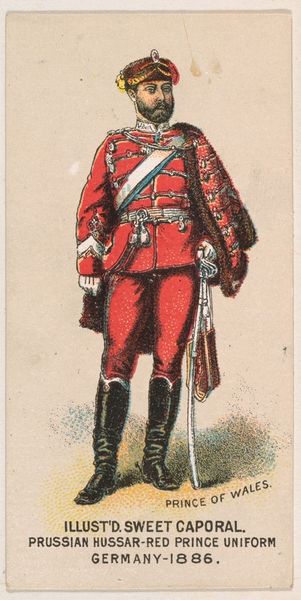
General of Infantry, Russia, 1886, from the Military Series (N224) issued by Kinney Tobacco Company to promote Sweet Caporal Cigarettes 1888
0:00
0:00
drawing, lithograph, print
#
portrait
#
drawing
#
lithograph
# print
#
coloured pencil
#
orientalism
#
men
#
history-painting
#
academic-art
Dimensions: Sheet: 2 3/4 × 1 1/2 in. (7 × 3.8 cm)
Copyright: Public Domain
This advertisement card from 1886, promoting Sweet Caporal Cigarettes, depicts Czar Alexander the Third in full military regalia. Note the eagle emblazoned on his headdress: a symbol reaching back to ancient Rome, signifying imperial power and divine authority. This recurring motif of the eagle appears throughout history in many contexts. Consider the Habsburg double-headed eagle, or even its stylized form in Nazi Germany. Here, as in those instances, the eagle is a potent assertion of sovereignty and military strength. It elicits a powerful emotional response, inspiring both awe and perhaps, a tremor of fear. Symbols such as these are not static; they evolve, carrying with them layers of historical memory. The Czar, knowingly or not, taps into a deep well of collective understanding, using the eagle to reinforce his image as a powerful, divinely appointed leader. Like a recurring dream, the image reappears, subtly altered yet still echoing its ancient origins.
Comments
No comments
Be the first to comment and join the conversation on the ultimate creative platform.

